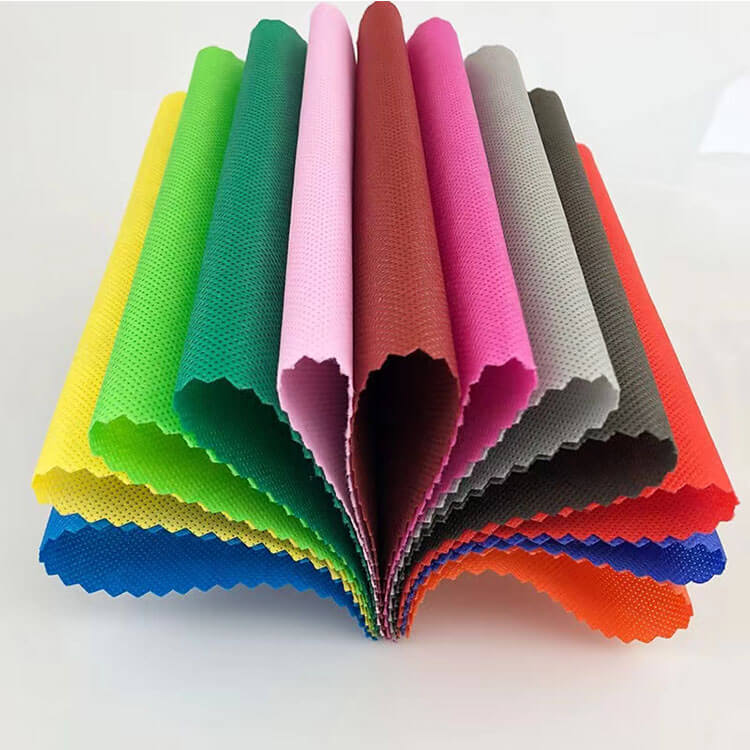Increased demand for non-woven hygiene products and their substantial usage in healthcare centers to propel the non-woven fabrics market growth.

The global non-woven fabrics market is anticipated to reach a valuation of US$ 82345.9 Mn by 2032, with the market expanding at a healthy CAGR of 7.0% from 2022 to 2032. Predicted to reach an estimated US$ 41892.2 Mn in 2022, the target market is likely driven by the beneficial properties of the material such as its lightweight quality.
These fabrics are registering high demand from the textile and healthcare industries mainly due to their exclusive properties. The affordability, durability, lightweight, versatility, and convenient transportation aspects of non-woven fabrics fuel the market growth of the same during the forecast period.
By 2032, the market for non-woven fabrics is anticipated to be worth US$ 82,345.9 million, up from US$ 41,892.2 million in 2022, growing at a CAGR of 7.0%. Non-woven fabric sales are increasing because they are high-tech, specially engineered, and easy-to-handle materials that have an advantage over other fabrics that either require knitting or weaving.
Request a Sample of this Report @ https://www.futuremarketinsights.com/reports/sample/rep-gb-4012
Cohesive fabric-like textiles that are manufactured by placing fibers together using chemicals, heat, and pressure are categorized as non-woven fabrics. These fabrics are usually used for their lightweight feature and are increasingly preferred over traditionally woven fabrics like linen, cotton, silk, and wool. These non-woven fabrics are uniquely engineered, high-tech fabrics that are easy to handle and have an added advantage over other fabrics that need weaving or knitting. Owing to these aspects the global sales of non-woven fabrics are on the rise during the projected period.
The fabrics are further used to manufacture interlinings, insulation & protection clothing, chemical defense suits, industrial workwear, and footwear. Consequently, non-woven fabrics are extensively utilized across several industries including textile, hygiene, personal care, automotive, filtration, and many others.
Furthermore, non-woven fabrics are gaining traction in the textile and healthcare sector. One of the major growth drivers of the non-woven fabrics market is the developing textile industry across the world. While, in the healthcare setting, rising demand for non-woven hygiene products is a major contributor to the overall market growth.
Again, the inherent properties of non-woven fabric also contribute to their rising demand. These fabrics can expand under tension, which helps them to absorb shockwaves and catch flying debris. This feature leads to the increasing adoption of these fabrics in the construction and automotive industries. All of these considerations drive the market growth of non-woven fabrics during the forecast period.
“Rising adoption in diverse industries such as hygiene, personal care, automotive, filtration, etc., promotes the global growth of the non-woven fabrics market over the forecast period,” says an FMI analyst.
Key Takeaways:
Competitive Landscape
E.I. du Pont de Nemours & Co, Ahlstrom Corporation, Avintiv, Inc., Kimberly-Clark Corporation, P.H. Glatfelter Co, Freudenberg SE, Suominen Corporation, Toray Industries Inc., Albarrie, and others are some of the major players in the non-woven fabrics market profiled in the full version of the report.
Leading market players are focusing on utilizing novel and innovative techniques to enhance product quality and durability. These firms are interested in developing new product lines and expanding their production capacities to strengthen their market position.
Get In Touch With Our Team For 30% Flat Discount
More Insights into Non-woven Fabrics Market Report
In its latest report, FMI offers an unbiased analysis of the global non-woven fabrics market, providing historical data from 2016 to 2021 and forecast statistics for 2022 to 2032. To understand the global market potential, growth, and scope, the market is segmented on the basis of polymer type (polypropylene (PP), polyethylene (PE), polyethylene terephthalate (PET), wood pulp, rayon, others), function (disposables, durables), application (hygiene, medical, filtration, automotive, building & construction, others), technology (spunbond, wet laid, dry laid, air laid), and region.
According to the latest FMI reports, based on region, the non-woven fabrics market in Europe will demonstrate considerable growth during 2022-2032. The market will acquire ownership of around 30% of the global market share and thus dominate in the international space. An upsurge in automobile, healthcare, and construction sectors across European nations will underpin the demand for non-woven fabrics during the projected period.
The non-woven fabrics market in North America will also present notable growth with a market share of 15%. The target market in this region will continue to perform well during the observation period owing to a well-established and advancing e-commerce sector. Rapid economic development, rising disposable income, high demand for hygiene products as well a strong presence of online sales channels drive the market growth of non-woven fabrics in this region during the forecast period.
Key Market Segments in the Non-Woven Fabrics Market
By Polymer Type:
By Function:
By Application:
By Technology:
By Region:
Ask the Analyst @ https://www.futuremarketinsights.com/ask-question/rep-gb-4012
Table of Content
About FMI Future Market Insights (ESOMAR certified market research organization and a member of Greater New York Chamber of Commerce) provides in-depth insights into governing factors elevating the demand in the market.
Feb 03, 2023